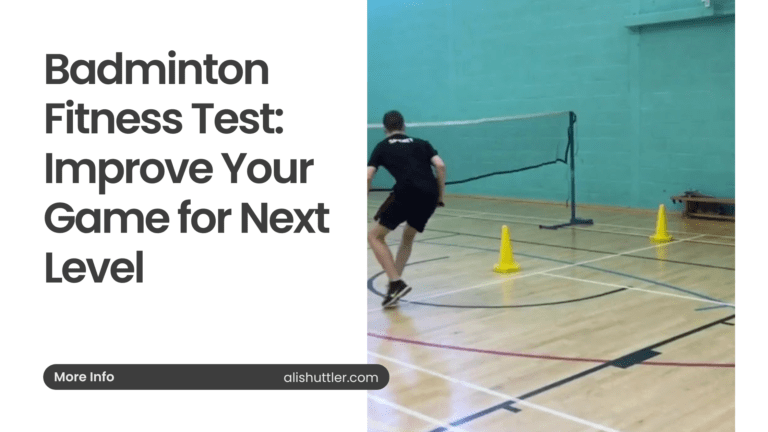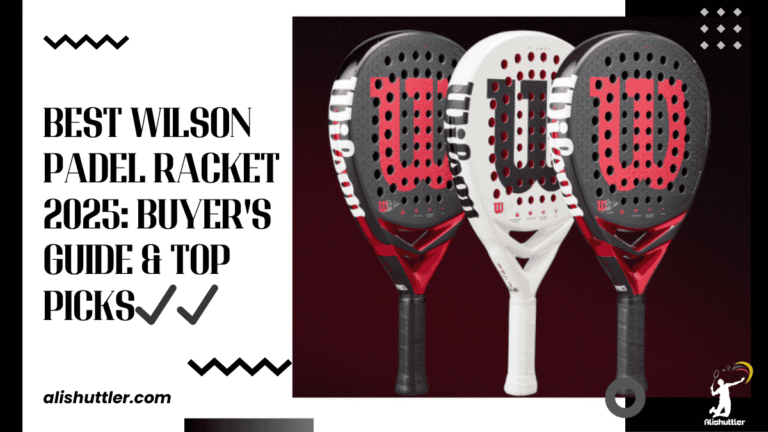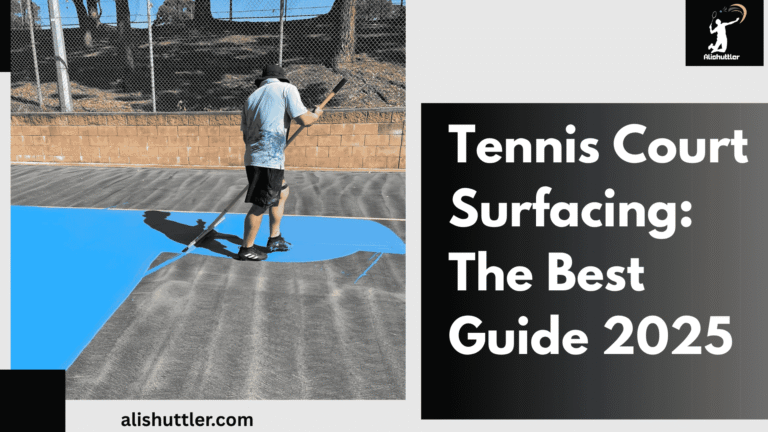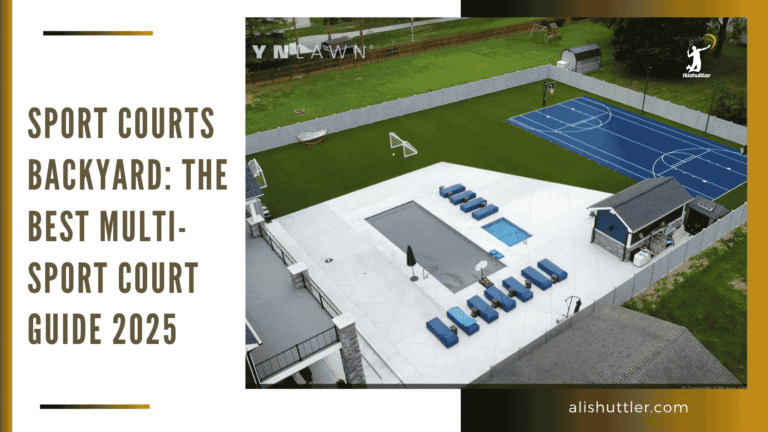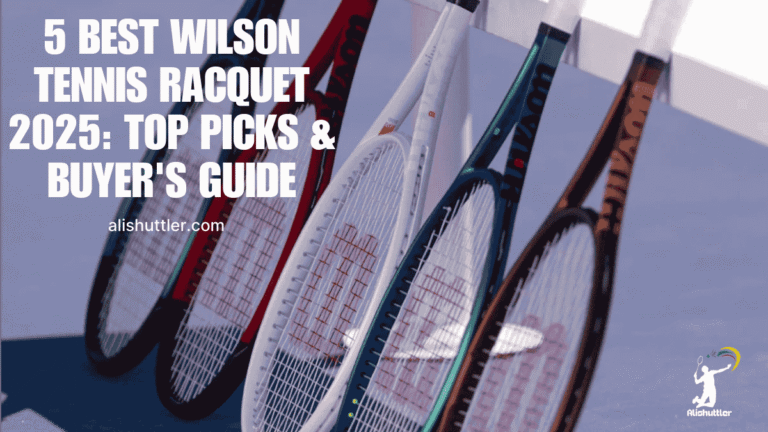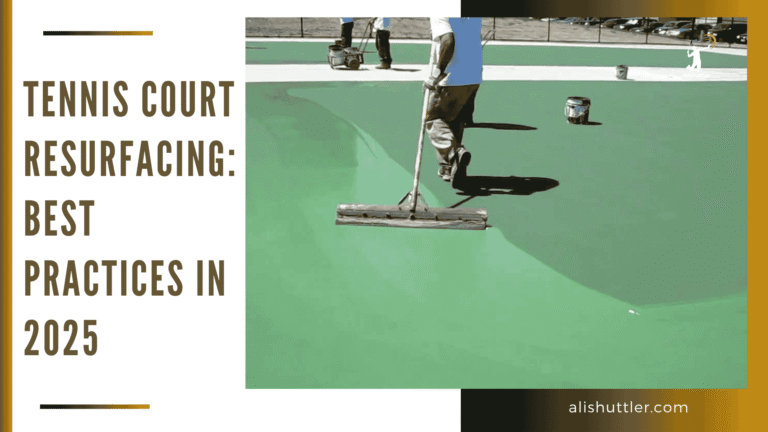Speedminton court setup is very easy, just put down two squares, 18 feet by 18 feet. Then, make sure there is 42 feet of space between the two cubes. With no net required, the game easily adapts to parks, gyms, or even backyards.
Simply put down some tape or chalk to outline the lines—perfect on grass, asphalt, or indoor courts. People would use cones or flags if tape was not feasible. The uncomplicated court setup is a big draw for speedminton in bustling cities like Los Angeles where room is at a premium.
Court design allows players to move fast and engage in fast, electric play outdoors, day or night. Then, take it out and experiment with what equipment works for you. Find out how to play safe to keep the game enjoyable and equitable for all!
What Is Speedminton Anyway?

Speedminton, known interchangeably as Crossminton, is a racket sport that combines elements of tennis, squash and badminton. The game stands out because it does not use a net, which means people can play almost anywhere—like beaches, backyards, parks, or even parking lots.
Unlike tennis or badminton, players do not need a set court or special surface, and setup is quick, often done in five minutes. The beauty of the equipment is its simplicity. Players use rackets similar to squash rackets.
Instead of a ball or a shuttlecock, they use a “Speeder.” This missile-like projectile is a lot heavier and more stable than a conventional shuttlecock, allowing it to fly straight even in windy conditions. For every purpose under various conditions and requirements, there are seven varieties of Speeders.
Other game models focus on breakneck speeds. Some are for beginners, some are designed for low-light conditions, and a few are best used in windy climates. When played casually, the game is extremely adaptable.
When it comes to tournaments or league play, rules are simple to follow. The playing court consists of two 18-foot by 18-foot squares, 42 feet apart. Unlike most racquet sports, which require competitors to be 40-50ft from one another, Speedminton allows for greater flexibility.
This configuration keeps the pace of play quick while still not intimidating the occasional player with a significantly more challenging game. Speedminton is a game for all ages and all skill levels. That’s what makes it so popular around the world– in Australia, in Brazil, in Europe, in the U.S.
Why Proper Court Setup Rocks

A proper speedminton court setup doesn’t just provide a nice frame for the picture; it creates an easy court for players. When the court is set up correctly, there are two 18-by-18-foot squares and a 42-foot area in the center. This specific setup has a profound effect on how the game feels and enhances the outdoor play experience.
You end up with crisp lines, which leads to less arguing over calls and more playing. A court environment where players feel free and comfortable to move is essential. They can lunge and swing without colliding or stepping on each other’s equipment, allowing the team players to shine.
This is a setup for all the players to excel. With plaintiffs standing around 40 to 50 feet apart and defendants only 15 feet apart, the competitions remain fair and balanced.
Having a clearly marked court also reduces confusion. Now everyone knows exactly where they’re supposed to be standing and what their limits are. This cuts out guesswork, which is key for both casual games in the park and tight matches in a club, ensuring equal playing conditions.
On top of that, it makes sure everybody is safe. When the lanes are well defined, runners explode through the hole and cut with authority to avoid defenders. That’s a big benefit to safety, preventing rolled ankles or missteps, no matter if you’re playing on grass, sand, or even in a residential backyard.
It only takes five minutes to set up a portable court, making it easy and not a hassle to start. Whether you’re playing a casual pickup game at the neighborhood park or planning a more structured league play, this setup works for you.
That’s because it’s built to bend and shape itself to whatever stage you set. You can use tape or cones to mark boundaries and create an effective playing environment for speed badminton enthusiasts.
Find Your Perfect Playing Spot

Speedminton, or Crossminton, allows for a dynamic playing environment. It’s easy to put a court together wherever there is enough open, safe space. Consider venues such as a neighborhood park, your own backyard, or an urban plaza.
Choosing an optimal playing space starts with considering the area, the surface, and the surroundings. Picking the perfect playing spot ensures everyone has the most enjoyable experience, and it keeps the game flowing seamlessly.
How Much Space You Need
A typical Crossminton court requires two squares, about 18 feet by 18 feet, placed 42 feet apart. This configuration works great in any park or large backyard.
Provide additional space around the court so athletes can pursue the shuttlecock without colliding with obstacles. If you have friends or family who would like to come watch, consider providing space for them to do so without being disruptive.
On crowded days in municipal parks, aim for a low-traffic corner or space where you won’t disrupt other users.
Think About the Ground
Grass, sand, blacktop, or concrete, any of these surfaces is acceptable for playing speedminton. Others choose tennis or basketball courts because the smooth, even ground provides a suitable foundation for movement.
A grass or sandy surface might be softer underfoot, though it can slow you down. Make sure to look out for any dips, bumps, or wet areas before you begin.
A smooth, firm, dry surface minimizes the chance for falls and provides a more uniform stride.
Watch Out for Obstacles
Look around the space for benches, trees, trash cans—any objects that might trip a player or interfere with the game. Don’t have any items on court, including equipment bags, backpacks, or pets.
With a safe court, there are no breaks and no concern, allowing everyone to focus on the game.
Consider Sun and Wind Direction
Players won’t be able to see the ball if the sun is low enough to blind them. Look for a shady area or face away from the sun.
Since wind can greatly alter the path of the shuttlecock, be sure to verify wind direction and speed before beginning play. If the forecast is calling for bad weather, see if you can shift to an indoor location so it’s more conducive to play.
Gather Your Court Setup Gear

Setting up a speedminton court is pretty simple, but with the proper equipment, the game operates even more seamlessly. As you can see, most setups require just a few simple pieces. Here’s what you’ll reach for: two racquets, a few Speeders (these are the special shuttlecocks), boundary markers, and a measuring tape.
Many people bring cones, chalk, or tape to set up lines. Have everything that’s needed ready beforehand. That way, when you arrive, you can get right to playing with no setup time!
Your Basic Speedminton Set
Your Basic Speedminton Set provides you with two racquets and a handful of Speeders. The basic Speedminton Speeders are Fun, Match, Night, and Cross models. The Fun Speeder is perfect for beginners, and the Match Speeder is designed for advanced, quick-paced gameplay.
Night Speeders glow in the dark for nighttime games, and Cross Speeders are good for blustery days. Choosing durable, even-weighted racquets gives you more control on your hits and keeps the game even, regardless of experience.
If you’re just starting out, lighter racquets and Fun Speeders will be a breeze to learn the game with. Advanced players will prefer a heavier racquet and Match or Cross Speeders for added speed.
Tools for Marking Lines
For court lines, folks will use paint on grass, cones on pavement, or tape on smooth surfaces. Chalk is a good alternative if you’ll be marking on a driveway. Choose durable materials, so lines remain visible throughout the game.
This will help ensure that play is fair.
Don’t Forget a Measuring Tape
Use a tape measure to create the two 18-by-18-foot squares with 42 feet between them. Pick one that has large, easy-to-read numbers for maximum visibility.
Paint the court. Taking care of the court lines first can save a lot of time. This step ensures the court remains in accordance with regulations and maintains level playing conditions.
Set Up Your Speedminton Court

Setting up a Speedminton court requires a little effort and a little time. Having a clear, visible court allows all players to know they’re playing by the same rules, and it makes the game fair and fun for everyone. Many enthusiasts create courts in parks, on beaches, and in their own backyards.
Setting up your court No net required, and you can get started with just two rackets and one Speeder. Whether by sun or moon, court setup stays the same. With special NIGHT Speeders and Speedlights, you can play this exciting game even after sunset. Here’s an easy, idiot-proof, step-by-step outline for constructing a court that accommodates all skill levels.
Step-by-Step Speedminton Court Setup:
- Choose an area that is level and relatively free of obstacles that will allow enough room for the court and safe movement around it.
- Gather measuring tape, chalk or cones, and visible markers.
- From wherever the line will be drawn out, measure out and mark your court layout; you’ll need two square boxes and a dead zone.
- Use cones or bright tape for clear, visible boundaries.
- Double-check all measurements for accuracy before starting play.
- Set Up Equipment and Go Over Court Rules With Everyone Before The Match.
1. Know the Official Court Size
Each Speedminton court has two square boxes on opposite sides. Each square is 18 ft x 18 ft (5.5 m x 5.5 m) with a “dead zone” of 42 ft (12.8 m) in between. This arrangement is ideal for singles play.
In doubles, the court size does not change at all. If you have the room, you can set each box further away from each other. This gives you and your partner a distance of 40 to 50 feet apart, which is perfect. Each player requires 15 feet of space from their partner to begin a serve.
These measurements ensure play is competitive and provide ample space for each player to dart around. Knowing the official court size ahead of time will ensure you can set up a fair game right from the start.
2. Measure Out the Playing Zone
First things first—measure and mark off your entire playing zone. Go with a long tape measure or a taped-out rope. Set the first out and measure the dead zone on each side.
Then mark the outside edges of each box, as well as corners. To ensure maximum accuracy, we recommend marking the service lines and the centerline in each square. All markings should be straight and even, as the best, most accurate lines will ensure that everyone knows exactly where to stand and serve.
Get this part wrong and it’s not going to work. Without the right setup, your Speedminton experience will be dramatically altered. Therefore, calling will be difficult.
3. Mark Your First Square Box
This first square shapes the foundation of your playing space. Use cones, sidewalk chalk, or bright colored tape to mark your four corners and join them with straight lines. Ensure everything is the same length on each side and the corners are very square.
Make sure to verify all of these dimensions with a tape measure before proceeding. Having clear, visible corners makes it easier for players to make their own in and out calls, allowing games to flow faster and more amicably.
It can be useful to have a diagram or guide on hand. Ensure you have the correct dimensions by comparing your setup with the official diagram.
4. Measure the Middle Dead Zone
The dead zone is the area between the two square courts. This zone is to be 42 feet wide. Use the same types of markers to mark the start and end points.
The dead zone isn’t used in normal play but serves as a divider to separate the two halves of the court. It helps protect the flow of play by preventing players from hanging around the center dead zone. Clearly defined dead zone boundaries make it easy for players to understand if a shot is in play or out of bounds.
5. Mark Your Second Square Box
Once the dead zone is marked, use the measuring tape to lay out the second 18 by 18-foot square. The second box should match up with the first one, with the dead space in between.
Tip: Apply the same tools and techniques as with square box two to mark corners/lines. The second box needs to match the first box perfectly and be evenly spaced. Make sure that the distance between each square box is equal so that everything remains centered.
Using symmetry ensures balanced play and makes it easier to call fair shots during a match.
6. Always Double-Check Measurements
Always double-check every measurement before any play begins. Enlist the assistance of a second person. With two sets of eyes, it’s much easier to catch errors.
Measuring twice saves time in the long run and prevents arguments from breaking out later on. A well-laid court ensures optimal Speedminton conditions, longer rallies, and less fighting. A little time spent preparing now will ensure that everyone enjoys a wonderful match.
7. Use Cones or Visible Lines
Clearly defined boundaries are important, especially outside or in low light conditions. Neon cones, colored floor tape, or bright chalk lines are ideal.
Cones are portable and tape adheres to almost any flat surface. Choose highly visible colors that will contrast against grass, sand, or pavement. Check that all markers remain stable and do not move around while playing. Clear visibility = less foggy brain = better game.
Step 8: Play at Night with the NIGHT Speeder and Speedlights
Don’t forget to make sure the court lines are easy to see! This means that you can set up your Speedminton court just about anywhere as long as you have enough flat ground.
If you’re looking for more information, you can find court diagrams and beginner’s guides available online. Don’t forget that the Speeder is meant for outdoor playing conditions. Its stability is impressive, able to endure winds of up to 25 miles per hour, making it ideal for open areas.
Follow these instructions to create an adaptable court for any group or setting that will get everyone on their feet having fun with Speedminton.
Best Surfaces for Speedminton
Speedminton really excels on all kinds of surfaces so getting set up is quick and easy. You can set up with friends in your home park, backyard, parking lot … or take it to the beach! Each surface type comes with certain advantages and disadvantages, influencing comfort, gameplay, and maintenance.
The best option is usually whatever you have on hand. It depends on the kind of game that you’re looking to play. The table below sums up the main points:
| Surface | Pros | Cons | Durability | Comfort | Playability |
|---|---|---|---|---|---|
| Grass | Soft, good shock-absorption, easy on joints | Needs mowing, can get uneven or muddy | Medium | High | Medium |
| Sand | Cushioned, fun vibe, great for the beach | Hard to move fast, boundaries shift | Low | High | Low |
| Asphalt/Concrete | Durable, easy to mark, flat and predictable | Hard on joints, gets hot, risk of falls | High | Low | High |
| Indoor Flooring | Weather-proof, consistent surface | Needs space, can be slippery | High | Medium | High |
Playing Speedminton on Grass
Grass is incredibly soft and easy on the body, making it the surface of choice for recreational play. A maintained lawn provides an excellent surface with plenty of traction and bounce.
Bumps or holes will still trip you up and wet grass can become slick quickly. Mow down grass and remove any other debris to ensure a nice, flat playing surface. Adding soil to low spots helps make it more level.
Setting Up Court on Sand
On sand… Sand courts have a chill vibe—perfect for casual matches or the beach. Soft fine sand will slow you down, and it may make the lines unclear, so consider using cones or stakes to mark out boundaries.
The sand you want for the best setup court.
Using Hard Surfaces Like Asphalt
Using hard surfaces like asphalt Hard surfaces such as asphalt or concrete are durable and easy to deploy. The playing surface remains nice and flat, and lines are easily visible using tape or chalk.
Unfortunately, these surfaces can be hard on joints. Footwear Choose shoes that have both cushion and grip. Asphalt is very hot in summer, so play either early or late in the day and make sure you hydrate!
Indoor Court Considerations
Indoor court considerations Indoor setups require ample room and a ceiling high enough to accommodate long shots. Quality lighting reduces glare and shadows.
Non-slip mats or padding contribute to the safety of players and floors.
Our Favorite Surface Choice
Our favorite surface choice The majority of players choose grass or smooth asphalt as the best combination of comfort and performance.
Test out courts in parks, backyards, or even parking lots to find the surface that caters best to your play style.
Indoor Versus Outdoor Setup Tips
A speedminton court can be set up just about anywhere. It’s a different story when you move indoors versus outdoors. Both setups have their respective advantages and disadvantages. Here’s a quick look at what shifts between the two:
Indoor games require less equipment in general, but you still have to find a large, open space—like a school gym or rec center. Outdoor games can happen almost anywhere flat: beaches, backyards, parks, or even parking lots. Weather, lighting, and surface type conditions are far more important when you’re outside. It’s pretty amazing how to this day setup time remains extremely minimal—usually around five minutes or less, in either direction.
Adjusting for Indoor Spaces
When playing indoors, having enough space to play in is very important. Allow for a distance of 15-50’ between players. Smooth concrete is the ideal surface. Gym floors are great.
Be mindful of walls or other obstructions, as players will require space to move quickly in any direction. High-quality lighting can help you quickly and accurately identify the speeder. As soon as the space starts to feel stale, ventilate with fans or an open window.
High ceilings in some venues are a blessing, but low ceilings can put restrictions on any lobs or high shots.
Handling Outdoor Weather Issues
Outdoors, the weather can turn everything around in an instant. Whether it’s sun, rain, or wind, outdoor elements can unexpectedly appear. Plan for the weather. Check the forecast before you set out.
When it’s windy, a unique wind speeder ensures equitable play. Consider having a backup indoor spot ready if rain is forecast. Grass, sand, or blacktop, each surface has a different bouncy feel to it. A smooth, flat, level surface area makes it easy to play the game.
Lighting for Evening Games
For evening games, powerful lighting is required. High-powered, gas or battery-operated portable LED floodlights or blacklight setups can address most park or lot venues.
For added fun and visibility, players might use glow-in-the-dark speeders. Make sure to always have the area well lit so there are no trip or fall hazards, especially in low light.
Avoid These Setup Goofs
There’s a little more to setting up a speedminton court than just string and pegs. These little goofs can ruin a game experience, or worse. By noticing the finer points, it’s easy to ensure play stays fair, safe and fun.
Below are slip-ups you want to sidestep:
- Skipping steps in measuring court lines or using guesswork
- Choosing areas with a lot of slopes, loose soil, or excessive elevation changes
- Not putting pegs in the bottom of the markers to hold them in place, causing redistricting lines to move out of communities of color.
- Siting courts without consideration of nearby mature trees, fences or other open play areas
- Not leaving enough space for players to move safely
- Going with markers that slide or can easily blow away
Getting Court Size Wrong
When courts are the wrong size, it’s just an awkward game. The result will be awkward bounces, a cramped playing experience, or a field that players can’t navigate effectively.
The official speedminton court is 13 x 13 ft, with squares 26 feet apart. Never assume anything, and measure everything—twice. For competitive tournaments, maintaining consistency among sizes reinforces their integrity and fairness.
Ignoring Uneven Ground Issues
It’s hard to play on a bumpy, undulated, or uneven surface. Players risk a bad fall or ankle sprain, and shots will consistently miss their mark.
Ignoring uneven ground issues can lead to a frustrating experience. Surveying the site before setup is key. If there are ground issues, remove obstructions, fill in uneven areas, or lay down ground mats if necessary.
Not Enough Safety Space
All these people on courts, packed in like sardines, just creates a recipe for bumps and bruises. There needs to be a minimum of 15 feet between players and ample space outside of the lines.
Don’t put courts next to walls or crowded walkways. A safety buffer is the only thing that will put everyone’s mind at rest.
Using Markers That Move
Using flimsy boundary markers results in line calls that nobody believes. This can create confusion and frustration among players.
As with any outreach event, setup should be intentional. Setting predictable limits leads to a level playing field.
Conclusion
Setting up a speedminton court in the U.S. Isn’t difficult at all, especially with the appropriate measures and equipment. Parks, backyards, or even a large gym floor provide lots of ideal locations. A simple tape measure, some chalk and your cones can go a long way. While the majority of people play on grass or blacktop, almost any flat surface will suffice in a pinch.
Sun or shade, indoors or outdoors, you simply chalk your lines, set your court markers down and get right into the action. Missed lines or uneven terrain can cause backtracking, so be mindful of this aspect. Have fun preparing your equipment for the upcoming match! Grab your friends or family and assemble a court to have some fun. Sound off with your most creative setups or go-to tricks in the comments.
Frequently Asked Questions
How big should a speedminton court be?
The dimensions of a regular speed badminton court are 42 feet long and 20 feet wide, providing equal playing conditions for athletes. Each half court features a square ‘service zone’ 18 feet from the middle line, allowing for easy court setup without a net.
What equipment do I need for a speedminton court setup?
You’ll want to have boundary lines (tape or marker cones), measuring tape, and anchors to keep lines down for your portable court. Beyond that, don’t forget your racquets, speeders, and shoes appropriate for outdoor play.
Can I set up a speedminton court on grass in Los Angeles?
Yes! I’d say grass is your best bet in LA parks or backyards for outdoor play, but just be sure the grass is well trimmed and level to ensure equal playing conditions.
Is it safe to play speedminton on concrete or asphalt?
Heck yes. Most LA players engage in outdoor play on tennis or basketball courts. Simply choose shoes with enough traction to avoid slipping and use common sense to select a portable court that keeps you away from moving vehicles and other hazards.
What’s the best way to mark my court boundaries?
Recommended options for creating outdoor play boundary lines include cones and chalk. Here in LA, chalk is great for quick-to-use, temporary lines on concrete, while bright tape with durable ground stakes works well for grass.
Can I set up a speedminton court indoors?
No, gyms or community centers are ideal for outdoor play. Ensure you have adequate ceiling height and room for an easy court setup. Athletic tape or painter’s tape works great for marking court lines indoors.
What’s the biggest mistake to avoid when setting up a speedminton court?
To ensure equal playing conditions, avoid eyeballing the measurement. Use a measuring tape for precise measurements, which helps maintain fairness in outdoor play and prevents arguments. Test your lines before you engage in any activity.

